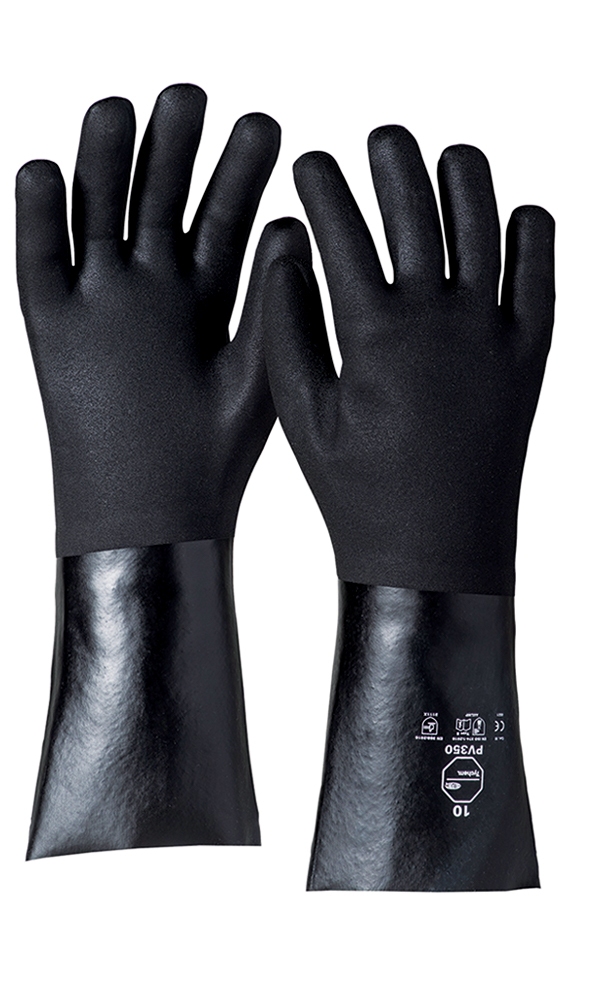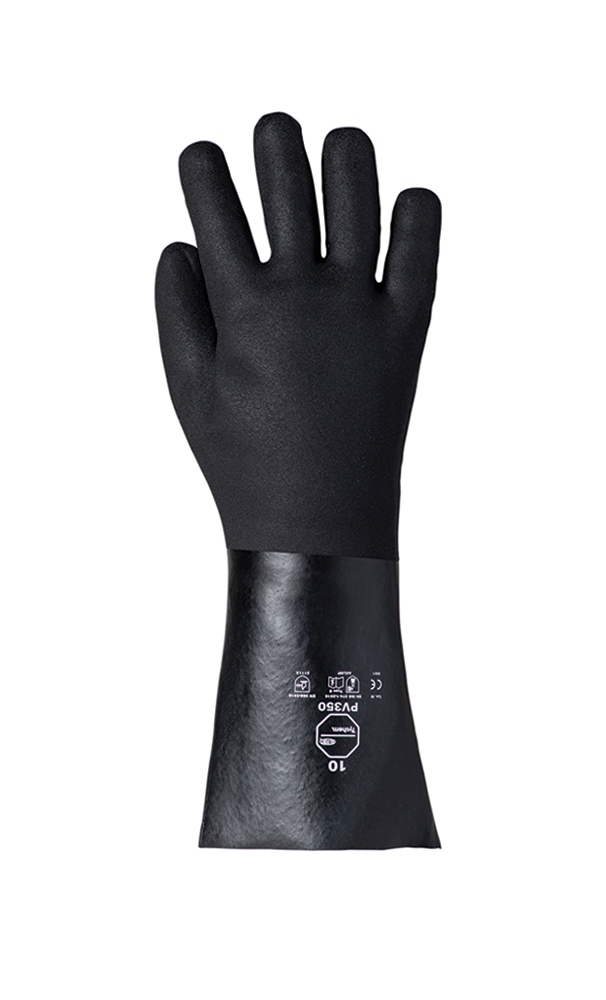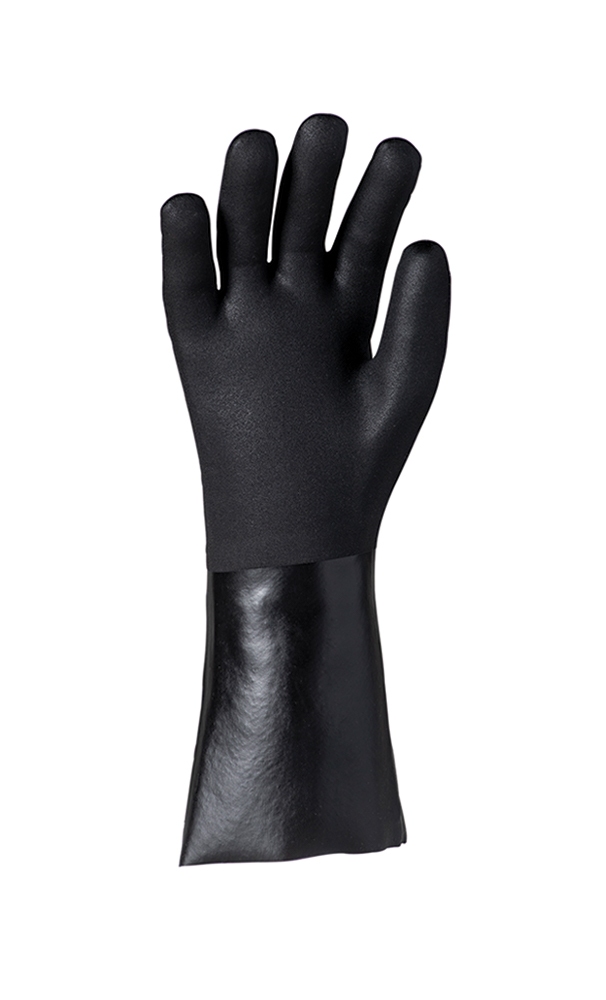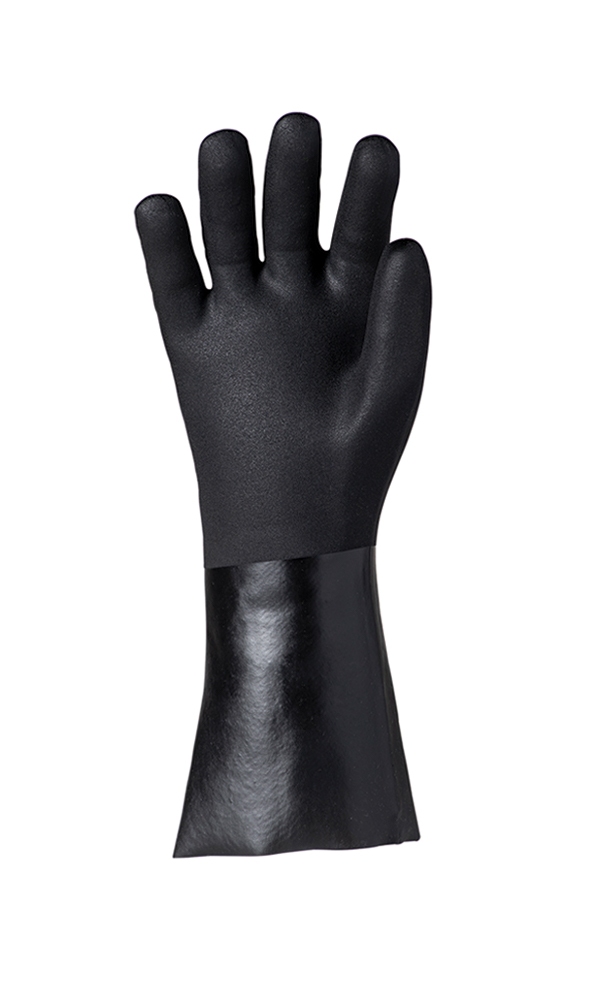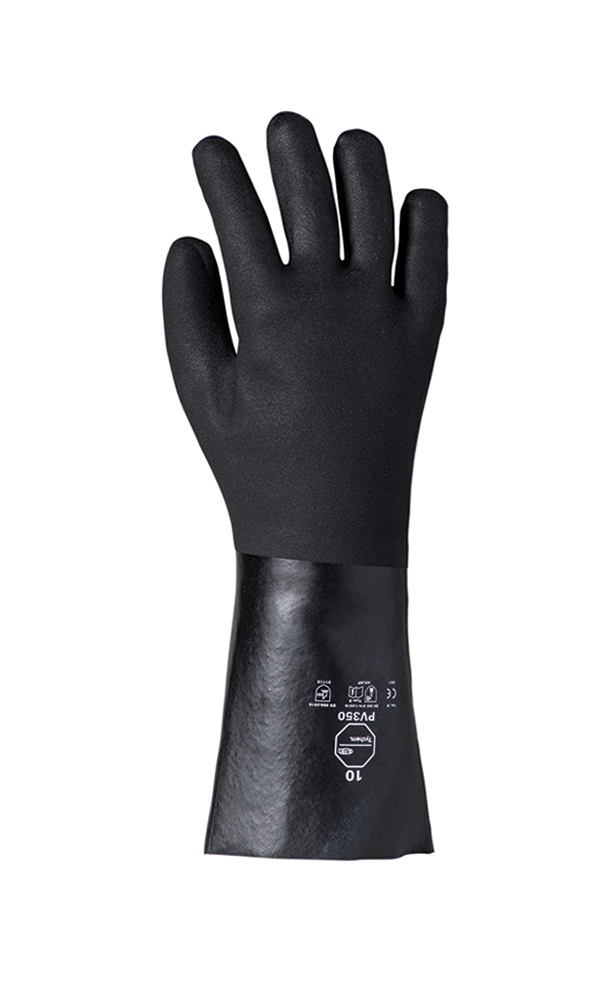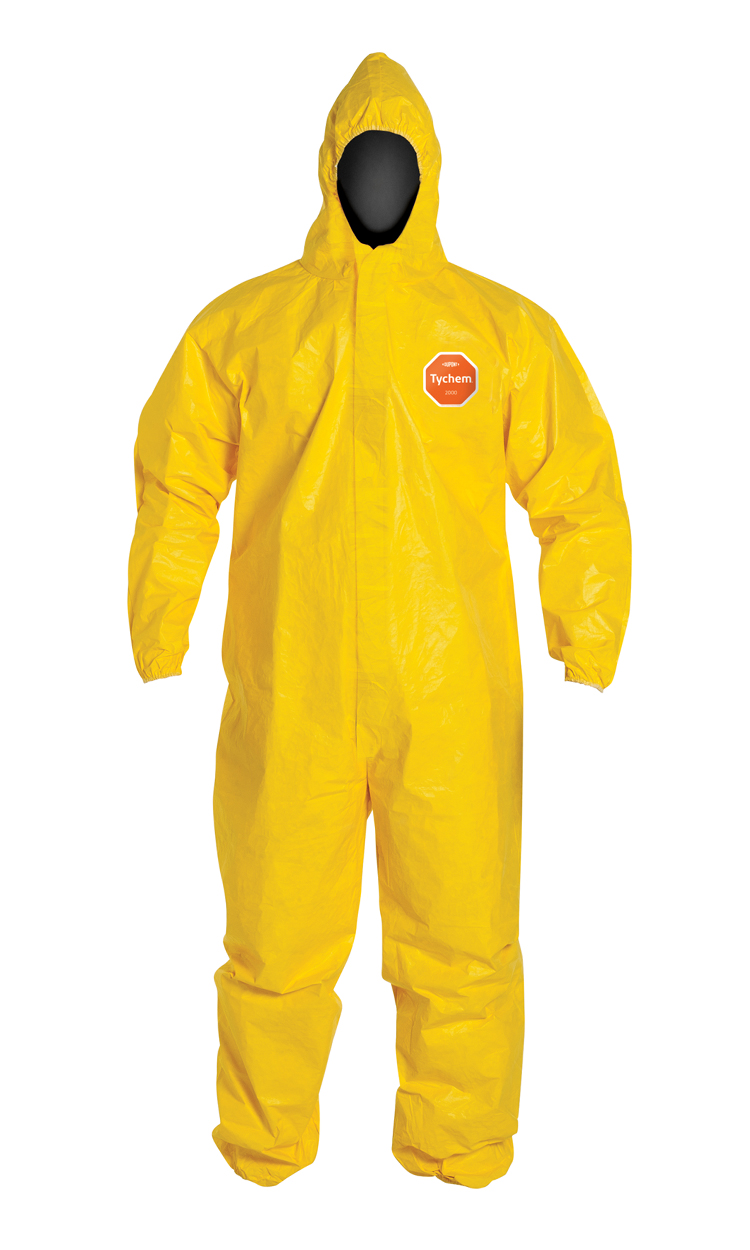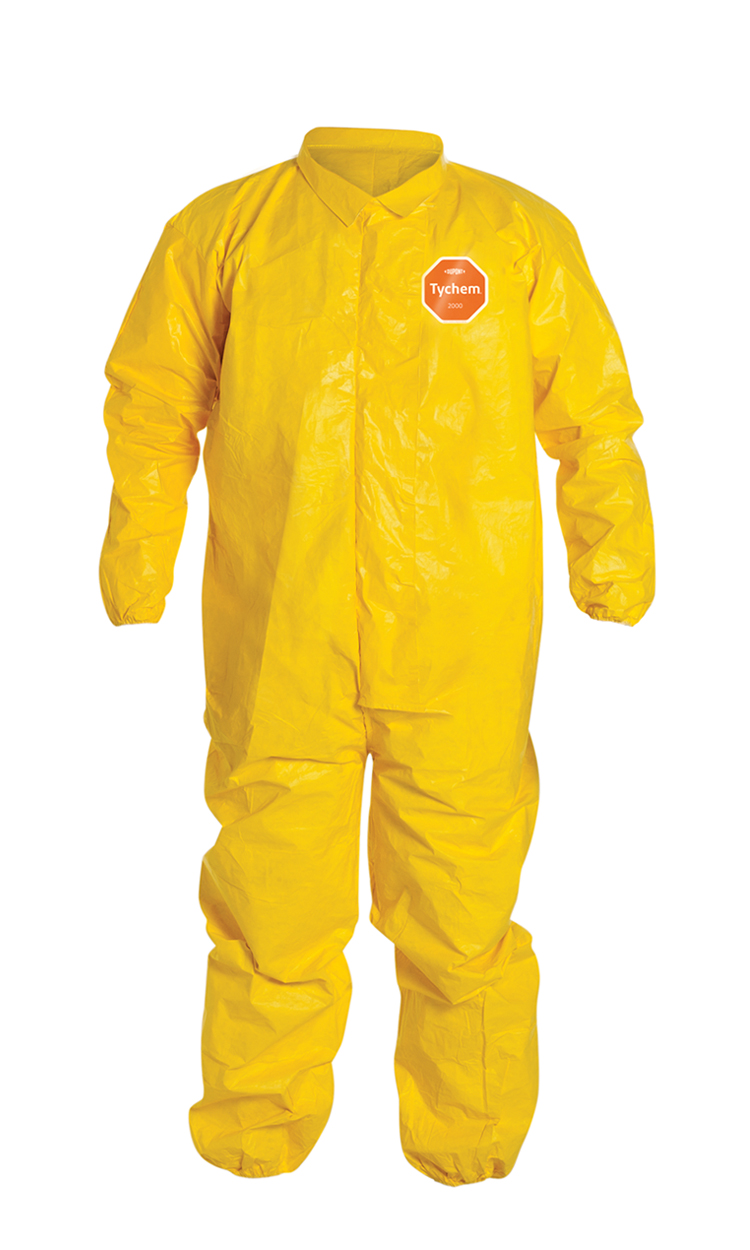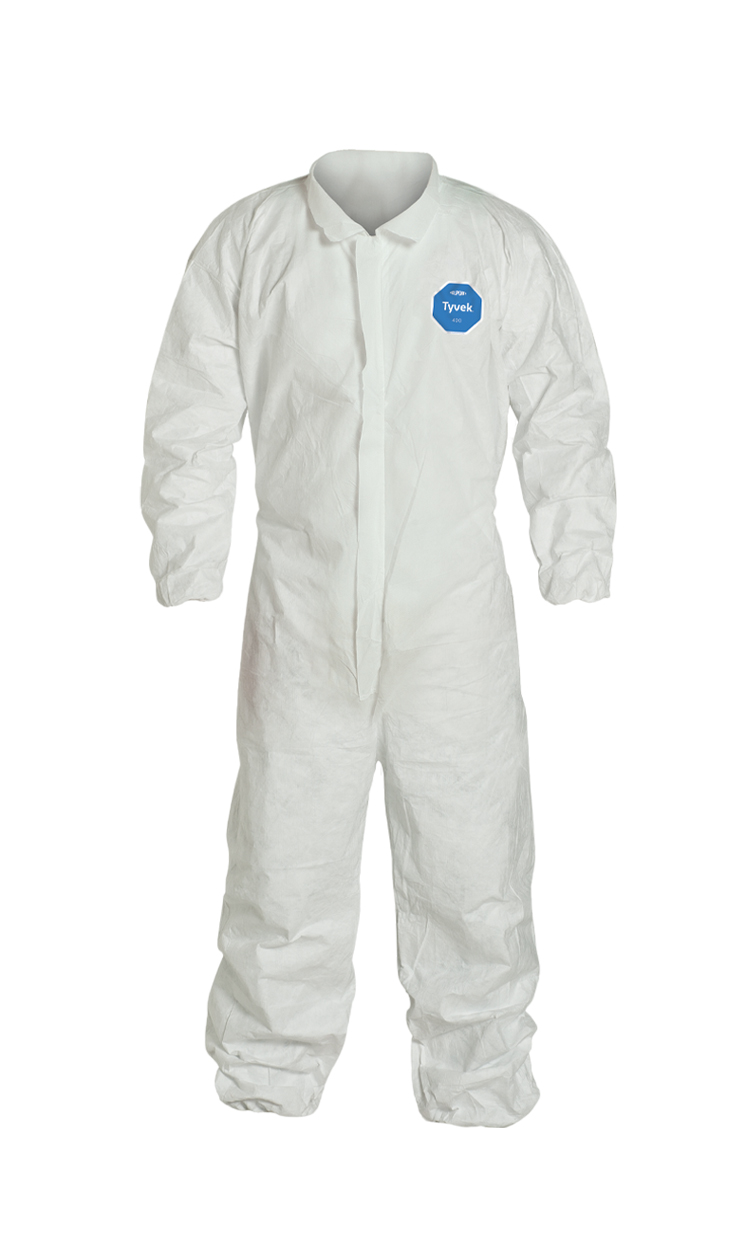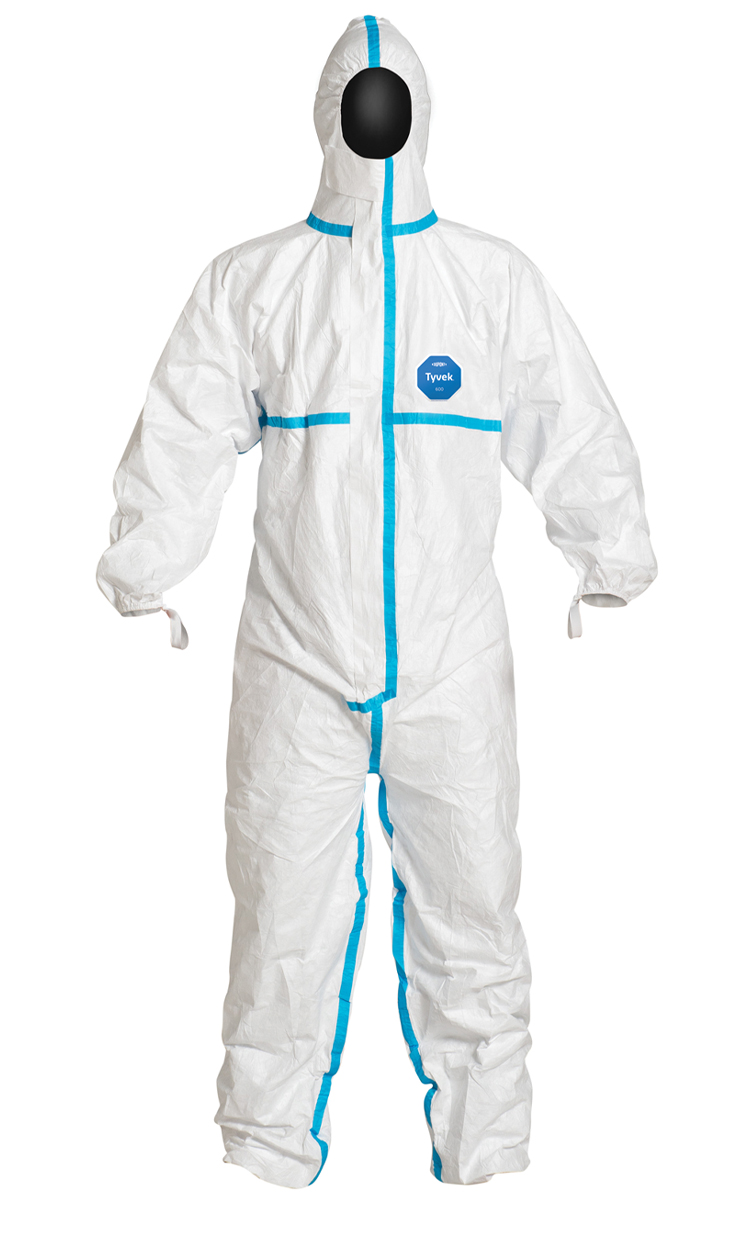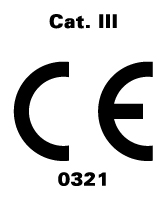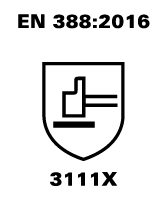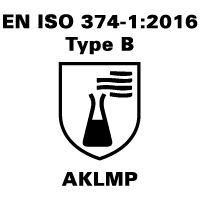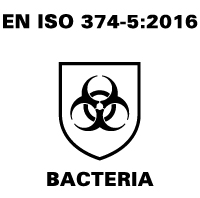Are gloves latex free?
This depends on the specific Tychem® glove model; read the Instructions for Use for more information. Tychem® NP530 contains natural rubber (latex).
The temperature of my hazard is HIGHER than what is listed in the "Search Hazards" box. What should I do?
If the temperature of your hazard is HIGHER than the hazard listed in the hazard search box, you should NOT use the data of the lower temperature hazard. Since chemical permeation rates can increase with increasing temperature, selecting a lower temperature chemical hazard will not give you an accurate assessment of the gloves’ barrier properties.
PLEASE NOTE: DuPont Tychem® gloves do not provide adequate insulation to protect the wearer's skin against prolonged exposures to high temperature chemical hazards. Depending on the temperature of the chemical hazard and the duration of exposure, the wearer could be subjected to a thermal burn. Unless otherwise stated, DuPont conducts chemical permeation tests at ambient temperatures (approximately 68-81°F ; 20-27°C).
The temperature of my hazard is LOWER than what is listed in the "Search hazards" box. What should I do?
If the temperature of your hazard is LOWER than the hazard listed in the hazard search box, you can select the higher temperature hazard results -as long as the physical phase (solid, liquid, or gas/vapor) is the same. Because the chemical permeation rate can increase with increasing temperature, selecting a higher temperature chemical hazard will generally lead to a more conservative result.
PLEASE NOTE: DuPont Tychem® gloves do not provide adequate insulation to protect the wearer's skin against prolonged exposures to cold temperature chemical hazards. Depending on the temperature of the chemical and the duration of exposure, the wearer could be subjected to frostbite. In addition, at very low temperatures, the glove could lose flexibility. Unless otherwise stated, DuPont conducts chemical permeation tests at ambient temperatures (approximately 68-81°F ; 20-27°C).
How do I decide what thickness of glove material is needed?
Glove thickness influences chemical barrier level. Thickness will also affect the glove’s dexterity and durability. When deciding which glove option to select, consider the chemical permeation barrier to your workplace hazards as well as the tasks to be completed to properly balance chemical protection, dexterity, and durability.
How do I decide what glove length is needed?
Your hazard assessment is the starting point to determine the appropriate glove length. There may be several Tychem® gloves that can provide the necessary protection against a specific chemical. The work scenario used in the hazard assessment will include the expected arm exposure areas. This information should be taken into account when selecting Tychem® gloves.
How are degradation and permeation performance related?
Permeation testing is the proper measure of chemical barrier. Degradation testing is not a measure of barrier. Degradation testing assesses compatibility of the glove to be in contact with the chemical. Degradation occurs when there is a change in the glove tested. That is often a subjective visual assessment such as did the glove swell or stiffen or become brittle. It can also be a quantitative measurement of strength or weight loss. Degradation test results have limited value except if the glove shows degradation after exposure to the chemical, then it is definitely not a good candidate to provide barrier to that chemical. But if the glove has good degradation results that tells you nothing about the permeation barrier performance to expect.
How do I know which Tychem® glove model will provide protection for my unique set of conditions?
Your hazard assessment is the starting point. There may be several Tychem® gloves that can provide the necessary protection against a specific chemical. Sometimes the work scenario may have other factors such as the need for increased dexterity or cut protection, which should be taken into account based on the Tychem® glove options available which offer the necessary chemical protection level.
If a glove has good degradation properties, is that enough to protect me?
Degradation testing only provides an indication of physical changes of the glove after chemical exposure. Degradation testing is not intended to provide direct information about protection offered by the glove against any chemical. Degradation is not a measure of barrier. It is a means of assessing the compatibility of the material to be in contact with the chemical. Degradation has occurred when there is a change in the material being tested. That is often a subjective visual assessment - such as - did the material swell or stiffen or become brittle. It can also provide a quantitative measurement of strength loss or weight loss. The value of degradation testing is limited except if the material shows degradation after exposure to the chemical, then it is definitely not a good candidate to provide barrier to that chemical.
Are Tychem® gloves silicone-free?
DuPont makes no claims regarding whether or not Tychem® gloves contain silicone. For end uses with concerns about possible contamination with silicone oils or any other contaminants, the best practice is to audit inbound materials for those contaminants.
Regarding permeation testing, what is the breakthrough time? What is a normalized breakthrough time?
In permeation testing, the “breakthrough time” is the length of time it takes for a challenge chemical to permeate the barrier material being tested. Time is measured from initial contact of the challenge chemical with the outside surface of the test material to the time that the challenge chemical is detected on the inside of the material. Sensitive analytical equipment is used to detect the chemical permeating through the material.
“Normalized breakthrough time” (which is also called "standardized breakthrough time”), is defined in the ASTM F739 test method. It is the elapsed time from initial contact with the challenge chemical until the chemical permeates through the barrier material at a rate of 0.1 ug/cm2/min. Using the same normalized breakthrough criteria eliminates any result bias due to differences in the sensitivity of the detection equipment between test labs.
What type of Tychem® exterior glove finish is required for my application?
The finish on the outside of the glove can affect the wearer’s ability to perform necessary work tasks. A rough or textured exterior can provide extra “grip” to complete tasks in a wet environment. Your hazard assessment is the starting point to determine the preferred exterior glove finish. There may be several Tychem® gloves that can provide the necessary protection against a specific chemical. Sometimes the work scenario may have other factors such as the need for increased dexterity or cut protection, which should be taken into account based on the Tychem® glove options available which offer the necessary chemical protection level.
What is the difference between chemical penetration and permeation? How do I know which test method to use?
Penetration is the passage of a chemical through a pore or opening in the barrier material. Permeation is the passage of a chemical through the barrier material at a molecular level. To help explain the differences between these two mechanisms, consider this example. Have you ever opened an old bottle of soda pop to find out that it was flat with no carbonation? Since there were no holes in the bottle, the liquid was still inside. But why was the soda pop flat? It's flat because the carbon dioxide gas that gives soda pop its “fizz” had permeated through the walls of the bottle over time at a molecular level. If you had opened a fresh bottle of soda pop and did not replace the cap, then the carbon dioxide gas would have escaped out of the top of the bottle due to the penetration mechanism.
Permeation tests are most appropriate to be used to assess chemical barrier for liquid and gas phase chemicals. Penetration tests are most appropriate for determining chemical barrier for particles (solid phase) chemicals and for checking interface areas between a garment and glove or garment hood and respirator.
Do I need a supported liner in my chemical protective glove?
Supported liners can provide additional physical strength and/or cut protection. They can also provide additional thermal insulation from hot or cold exposures. Selection of a particular Tychem® glove model should consider the chemical protection needed as well as other properties required to perform the task.
What are the test conditions used for the permeation testing - what are the chemical concentrations and test temperatures? What method is used?
Permeation data for all Tychem® gloves is obtained per ASTM F739 (continuous chemical contact). Some gloves also provide permeation data per ASTM F1383 (intermittent chemical contact). For both test methods, normalized breakthrough time (the time at which the permeation rate is equal to 0.1 ug/cm2/min) are reported in minutes. All liquid chemicals have been tested between approximately 20°C and 27°C unless otherwise stated. All chemicals have been tested at a concentration of greater than 95% unless otherwise stated. Chemical warfare agents (Lewisite, Sarin, Soman, Sulfur Mustard, Tabun and VX Nerve Agent) have been tested at 22°C and 50% relative humidity per military standard MIL-STD-282.
What's the difference between testing a glove for continuous and intermittent chemical contact?
There are different ways that a glove can have its chemical barrier assessed. Permeation data for all Tychem® gloves is obtained per ASTM F739 (continuous chemical contact). Some gloves also provide permeation data per ASTM F1383 (intermittent chemical contact). For both test methods, normalized breakthrough time (the time at which the permeation rate is equal to 0.1 ug/cm2/min) is reported in minutes.
In the F739 method, the chemical is kept in contact continuously with the glove material for the entire duration of the test (which is typically 8 hours). In the F1383 method, the contact between the glove material and the chemical is intermittent - sometime called a “splash” exposure. For F1383 data provided for Tychem® gloves, Method A is used. This means that during the test period, chemical contact occurs for 1 minute followed by 9 minutes without contact. This cycle is repeated for 4 hours.
The permeation breakthrough time for the F1383 intermittent contact method is normally longer than the permeation breakthrough time for the F739 continuous contact method.
How do I inspect my gloves to check that they are acceptable to use?
The wearer should perform a visual inspection of the gloves before wearing. Inspect gloves to ensure there are no pinholes, tears, or signs of degradation or damage. The effects of degradation may include (but not limited to) swelling, wrinkling, deterioration, discoloration or delamination. Do not use the gloves if any of these items are noted.
What does “18 gauge” mean?
Gauge is used to describe the closeness of needles used to knit a supported liner. The term refers to the number of needles per inch on the knitting machine. A higher gauge number means that the needles were closer together. A glove described as “18 gauge” would typically be thinner than a “15 gauge” glove.
In what ways can I dispose of Tychem® gloves?
If not contaminated, gloves may be landfilled or incinerated in accordance with local regulations. Uncontaminated chemical protective gloves may be incinerated in a facility that is capable of handling mixtures containing plastics. Likewise, an uncontaminated chemical protective glove may be buried in a facility that accepts plastic materials. Gloves may contain different materials; they are not suitable for recycling. Contaminated gloves that cannot be handled safely without protective equipment must be disposed of with other hazardous wastes, either through incineration or landfill per local regulations.
What are the donning and doffing instructions for Tychem® gloves?
GLOVE DONNING STEPS
1. Inspect gloves to ensure there are no pinholes, tears, or signs of degradation or damage.
2. Orient the glove’s fingers and thumb with the proper hand.
3. Insert open hand into the glove cuff opening and pull the cuff over the wrist.
4. Check for a secure fit around the fingers and palm.
GLOVE DOFFING STEPS
Decontamination steps are advised before attempting to remove gloves contaminated with any hazardous substances. After decontamination is complete, gloves should be removed using the following technique while avoiding skin contact with the exterior of the gloves.
1. Grasp the exterior cuff of one glove with your other gloved hand.
2. Carefully pull the glove off your hand, turning it inside-out (so that any remaining contamination is now on the inside).
3. Ball the removed glove and hold it in the palm of your other gloved hand.
4. Slide your ungloved fingers into the cuff opening of the other glove (avoid touching the exterior).
5. Carefully roll the glove off your second hand, turning it inside out (so that any remaining contamination is contained).
6. Discard of both gloves appropriately.
What is the shelf life of Tychem® gloves?
Tychem® gloves may be used for 3 years from the date of manufacture as long as all of the following conditions are met: The gloves have been stored properly; the gloves have not been damaged, altered or contaminated; the gloves pass a visual inspection before use.
What determines if the gloves are contaminated?
The decision on whether or not a glove has been contaminated is made by local personnel responsible for PPE based on an analysis of the exposure incident or work practices in which the glove was used. This analysis may include exposure time, chemicals involved, level of exposure, proximity to the actual release, tasks performed, and environmental monitoring in the area in which the glove was worn. Gloves that are damaged, altered, or show signs of contamination, such as discoloration, odor, swelling, stiffening or cracking, should not be used. If the glove has contacted a hazard, dispose of the glove.
Is it possible to re-use Tychem® gloves?
Tychem® gloves are designed for limited-use. They can be worn until damaged, altered, or contaminated. If the gloves have not been contaminated, they can be cleaned for hygienic purposes and re-used.
How should Tychem® gloves be stored?
Store Tychem® gloves in a cool, dark, dry location free of dirt and insects. Sunlight, ozone, high temperatures (above 104°F; 40°C), vehicle exhaust fumes, compression under heavy weights and sharp edges or projections are some conditions known to degrade/damage the materials in these gloves. Store gloves in boxes. Never step on or place or store heavy objects on chemical gloves.
What is the maximum use temperature for Tychem® gloves?
Prolonged exposure to these temperatures will breakdown the glove materials over time
| Models |
|
|
VB830 and VB870 |
|
|
|
|
~400 degrees F |
| Models |
|
|
BT730 and BT770 |
|
|
|
|
~325 degrees F |
| Models |
|
|
NP530, NP560, and NP570CT |
|
|
|
|
~450 degrees F |
| Models |
|
|
NT420, NT430, NT450, NT470, and NT480 |
|
|
|
|
~325 degrees F |
| Model |
|
|
PV350 |
|
|
|
|
~225 degrees F |
PLEASE NOTE: DuPont Tychem® gloves do not provide adequate insulation to protect the wearer's skin against prolonged exposures to high temperatures. Depending on the temperature of the chemical hazard and the duration of exposure, the wearer could be subjected to a thermal burn.
I have a chemical mixture, what guidance can you give me?
Mixtures of chemicals can be significantly more aggressive towards protective glove materials than a single chemical alone. One chemical in the mixture may facilitate another chemical permeating through the material when neither would permeate on their own. Limited permeation data is available for chemical mixtures. If gloves must be used without mixture test data, then choose gloves having the broadest chemical resistance, i.e. materials which demonstrate the best chemical resistance against the widest range of chemicals. Ultimately, it is the end users' responsibility to select the appropriate personal protective equipment.
Reference:
OSHA Technical Manual, Section VIII, Chapter 1, Chemical Protective Clothing, III(B)(5). U.S. Department of Labor.
http://www.dol.gov.
 Is Suitable For Hazard Scenario
Is Suitable For Hazard Scenario
 Is Not Suitable For Hazard Scenario
Is Not Suitable For Hazard Scenario
 Is Suitable For Hazard Scenario
Is Suitable For Hazard Scenario Is Not Suitable For Hazard Scenario
Is Not Suitable For Hazard Scenario 